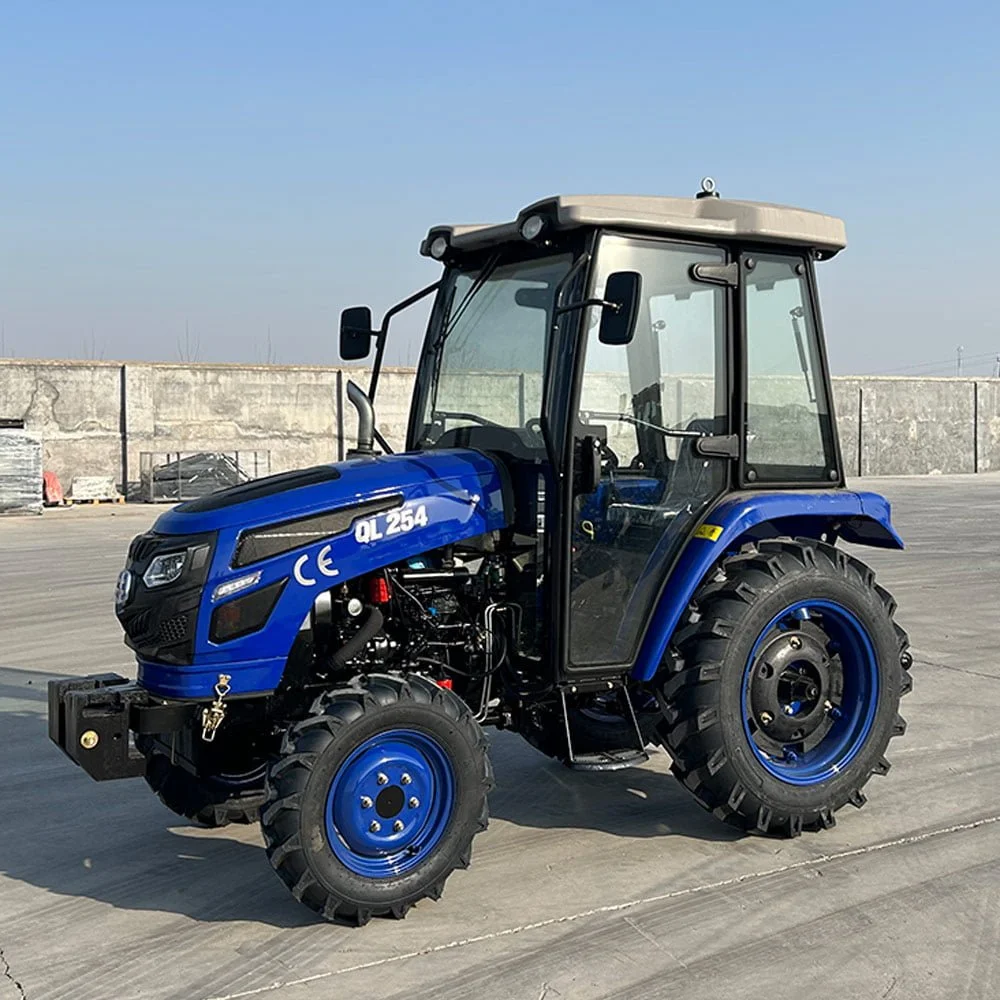بريد الالكتروني: [email protected] واتساب: 8618266768780
كيفية اختيار جرار الدفيئة المناسب
مرحباً بكم في مدونتي!
قبل أن نتعمق في المحتوى، أود منك الانضمام إليّ على منصات التواصل الاجتماعي الخاصة بي حيث أشارك المزيد من الأفكار وأتواصل مع المجتمع وأنشر التحديثات. إليك كيفية التواصل معي:
فيسبوك: https://www.facebook.com/profile.php?id=100072217509763
لينكدإن: https://www.linkedin.com/company/74949059/admin/dashboard/
يوتيوب:https://www.youtube.com/@tractormanufacturer-lc5qz
تيك توك: https://www.tiktok.com/@tractormanufacturer
الآن، لنبدأ رحلتنا معًا. أتمنى أن تجد المحتوى هنا مفيدًا وجذابًا وقيمًا.
مقدمة

Selecting the appropriate greenhouse tractor is a critical decision for any horticultural operation. A well-suited greenhouse tractor enhances productivity, ensures efficient use of space, and minimizes soil compaction within the confined areas of a greenhouse. Given the unique challenges posed by greenhouse environments—such as limited space, delicate crops, and specific climate conditions—it’s essential to choose a tractor that meets these specialized needs.
This comprehensive guide will explore the key factors to consider when selecting a greenhouse tractor, including size, maneuverability, power requirements, and compatibility with various attachments. Additionally, we’ll discuss maintenance practices to keep your greenhouse tractor in optimal condition and provide a comparison of popular greenhouse tractor models. By the end of this article, you’ll be equipped with the knowledge to make an informed decision tailored to your greenhouse operations.
Key Factors to Consider When Selecting a جرار الدفيئة
الحجم والقدرة على المناورة
Greenhouses often have narrow aisles and tight corners, making the size and maneuverability of the tractor paramount. A compact tractor with a tight turning radius allows for efficient navigation without damaging crops or structures. Tractors with isodiametric versions and central articulation, such as those offered by BCS, provide enhanced maneuverability in confined spaces. Bcs

متطلبات الطاقة
Assessing the power needs of your greenhouse operations is crucial. The tractor should have sufficient horsepower to handle tasks such as soil preparation, planting, and material transport. However, excessive power can lead to unnecessary fuel consumption and increased costs. Balancing power with efficiency ensures that the tractor meets operational demands without being overpowered for the tasks at hand.
Soil Compaction Considerations
Soil health is vital for optimal plant growth. Heavy machinery can lead to soil compaction, which adversely affects root development and water infiltration. Opting for a lightweight tractor with a low ground pressure design helps preserve soil structure. BCS tractors, for example, are designed to reduce soil compaction, safeguarding soil fertility and structure. Bcs
توافق المرفقات
Greenhouse operations often require various implements, such as tillers, seeders, and sprayers. Ensuring that the tractor is compatible with the necessary attachments enhances versatility and efficiency. Evaluate the tractor’s hydraulic system, three-point hitch category, and power take-off (PTO) specifications to confirm compatibility with existing or planned implements.
Ergonomics and Operator Comfort
Given the extended periods operators may spend on the tractor, ergonomics and comfort are important considerations. Features such as adjustable seating, intuitive controls, and low vibration levels contribute to operator well-being and productivity. Additionally, a low driving position, as seen in BCS tractors, facilitates easy access within greenhouse environments. Bcs
Comparison of Popular Greenhouse Tractor Models


Selecting the right greenhouse tractor involves comparing various models to determine which best fits your specific needs. Below is a comparison of some popular greenhouse tractor models based on key features and applications.
| نموذج جرار | قوة المحرك (حصان) | الوزن (كجم) | Turning Radius (m) | الميزات البارزة | أفضل التطبيقات |
|---|---|---|---|---|---|
| BCS Valiant 600 AR | 49 | 1,500 | 2.8 | Central articulation, low profile, isodiametric wheels | Greenhouses with narrow aisles and low overhead clearance |
| John Deere 2025R | 24.2 | 1,200 | 2.5 | Compact design, hydrostatic transmission, compatible with various attachments | Small to medium-sized greenhouses requiring versatile operations |
| Kubota B2301 | 22 | 1,100 | 2.3 | Lightweight, multiple PTO options, easy implement switching | Greenhouses focusing on delicate crop handling and minimal soil compaction |
| New Holland Boomer 25 | 24.7 | 1,300 | 2.6 | Super suite cab for comfort, responsive hydrostatic transmission | Greenhouses requiring enhanced operator comfort and efficiency |
This comparison highlights the diverse options available, allowing you to select a greenhouse tractor that aligns with your operational requirements and environmental constraints.
Maintenance Practices for Optimal Greenhouse TractorTractor/Farm Tractor | Tractor CompanyTractor/Farm Tractor | Tractor CompanyTractor/Farm Tractor | Tractor CompanyTractor/Farm Tractor | Tractor CompanyTractor/Farm Tractor | Tractor CompanyTractor/Farm Tractor | Tractor CompanyTractor/Farm Tractor | Tractor CompanyTractor/Farm Tractor | Tractor CompanyTractor/Farm Tractor | Tractor CompanyTractor/Farm Tractor | Tractor CompanyTractor/Farm Tractor | Tractor CompanyTractor/Farm Tractor | Tractor CompanyTractor/Farm Tractor | Tractor CompanyTractor/Farm Tractor | Tractor CompanyTractor/Farm Tractor | Tractor CompanyTractor/Farm Tractor | Tractor CompanyTractor/Farm Tractor | Tractor CompanyTractor/Farm Tractor | Tractor CompanyTractor/Farm Tractor | Tractor CompanyTractor/Farm Tractor | Tractor CompanyTractor/Farm Tractor | Tractor Company أداء

Proper maintenance is essential to ensure the longevity and reliability of your greenhouse tractor. Implementing a routine maintenance schedule can prevent unexpected breakdowns and costly repairs.
التفتيشات الدورية
Conduct daily visual inspections to identify any signs of wear, leaks, or loose components. Pay particular attention to oil levels, tire condition, and attachment points. Early detection of potential issues allows for timely intervention and reduces the risk of major failures.
فحص التزييت والسوائل
Regularly check and maintain appropriate levels of engine oil, coolant, and hydraulic fluids. Lubricate moving parts as specified in the manufacturer’s guidelines to minimize friction and wear. Neglecting fluid levels and lubrication can lead to overheating and mechanical failures.
Air Filter Maintenance
Greenhouse environments can be dusty, leading to clogged air filters that restrict airflow to the engine. Inspect and clean or replace air filters regularly to ensure optimal engine performance and fuel efficiency. A clean air filter prevents contaminants from entering the engine, thereby extending its lifespan.
Tire Pressure and Condition
Maintaining proper tire pressure is crucial for traction and minimizing soil compaction. Regularly inspect tires for signs of wear or damage and ensure they are inflated to the recommended pressure levels. Properly maintained tires enhance stability and reduce fuel consumption.
Seasonal Preparations
Before periods of inactivity, such as during off-seasons, prepare the tractor by adding fuel stabilizers and running the engine to circulate the additive. Store the tractor in a sheltered area to protect it from environmental elements. Periodic startups during storage help keep the engine components lubricated and prevent battery discharge.
استنتاج
Choosing the right greenhouse tractor involves evaluating key aspects such as size, horsepower, tire type, attachments, and brand reliability. By focusing on factors like maneuverability, fuel efficiency, low soil compaction, and operator comfort, you can make an informed decision that enhances both productivity and sustainability in your greenhouse operations.
التعليمات
ما هو جرار الدفيئة؟
جرار الدفيئة الزراعية هو آلة زراعية مدمجة وسهلة المناورة، مصممة خصيصًا للعمل ضمن المساحة الضيقة للدفيئة. يُستخدم عادةً لتحضير التربة، والزراعة، والنقل، والرش، وغيرها من المهام التي تتطلب دقة وعناية في مساحة محدودة.
لماذا الحجم مهم في جرار الدفيئة؟
تتميز الدفيئات الزراعية بمسارات ومساحات دوران محدودة. يُعد استخدام جرار أصغر حجمًا بنصف قطر دوران ضيق أمرًا بالغ الأهمية للتنقل بسهولة بين الأحواض والممرات دون الإضرار بالمحاصيل أو هياكل الدفيئة.
ما هو مقدار القوة الحصانية التي يحتاجها جرار الدفيئة؟
يعتمد ذلك على حجم العمل لديك. تتراوح قوة معظم جرارات الصوب الزراعية بين ٢٠ و٥٠ حصانًا. للمهام الخفيفة، مثل حرث التربة الرخوة أو نقل الأحمال الخفيفة، قد تكفي قوة تتراوح بين ٢٠ و٣٠ حصانًا. أما المهام الأثقل أو الصوب الزراعية الأكبر حجمًا، فقد تتطلب قوة تصل إلى ٥٠ حصانًا.
ما هي بعض الملحقات الأساسية لجرار الدفيئة؟
تشمل ملحقات جرارات الدفيئات الزراعية الشائعة المحاريث الدوارة، والرشاشات، وآلات البذر، والهزازات، والرافعات الأمامية، وخزانات المياه. من المهم التأكد من توافق جرارك مع الملحقات المحددة التي تخطط لاستخدامها.
هل يحتاج جرار الدفيئة إلى إطارات خاصة؟
نعم. غالبًا ما تستخدم جرارات الدفيئات الزراعية إطارات عشبية أو إطارات عائمة لتقليل ضغط التربة وتلف مناطق الجذور. كما تساعد هذه الإطارات في الحفاظ على ثبات أفضل في البيئات الضيقة والرطبة.
هل يمكنني استخدام جرار زراعي عادي في الدفيئة؟
عادةً ما تكون الجرارات العادية كبيرة وثقيلة الوزن جدًا على عمليات الصوب الزراعية. قد تُلحق الضرر بالمحاصيل، وتُدمّر التربة، وتُعيق حركة الدوران في مساحة محدودة. أما جرارات الصوب الزراعية، فهي مصممة خصيصًا لتكون صغيرة الحجم ومتعددة الاستخدامات في المساحات الضيقة.
معلومات عنا
شركة Shandong Qilu Industrial Co. ، Ltd. هي شركة مصنعة ومصدرة محترفة تدمج تطوير وإنتاج الحفارات واللوادر والجرارات. نحن نقدم أفضل خدمة ، بالتأكيد.
المشاركات الاخيرة
فيديو تجريبي
-1.png)
اتصل بنا اليوم!
اي سؤال او اقتباس او استفسار؟ انقر فوق الزر لإرسال رسالة.
سوف Qilu Industrial دائمًا هنا للمساعدة.
